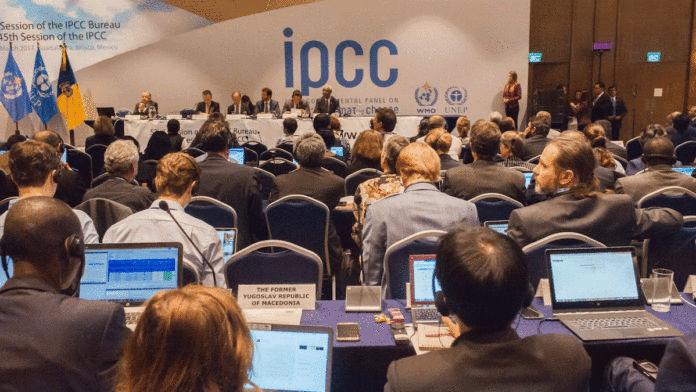Imad Sheikh Daoud / Professor of Public Policies and Political Systems at the College of Political Science – Al-Nahrain University.
The scientific team that prepared the latest UN warnings on the issue of climate change asserts that people and the ecosystem that are least able to adapt are the most affected by global warming and its dire consequences. This prompted the head of the authority (Hoesung Lee) to openly declare that the contents of the February 2022 report are severe sedation about the consequences of not responding to emissions reductions, that have become a serious threat to the well-being of people and the health of the planet as a whole, and that only preventive measures can determine how humans will adapt to increasing climate risks and how nature will respond.
This makes climate change one of the greatest enemies of people’s enjoyment of the implications of the International Bill of Human Rights and the work done for the Sustainable Development Goals (2015-2030) known as (SDGs).
Over the next two decades, humanity will face multiple climatic hazards that will be difficult to avoid in light of warming of (1.5) degrees Celsius. Even if it is temporary, working to eliminate its effects will be one of the most difficult challenges facing the humanitarian effort to maintain the sustainability of life, due to the pressure that it will place on (communities), (infrastructure) and (low coastal settlements) through a package of threats: (Health care, air pollution, diseases, extreme weather events, forced displacement, exacerbation of food insecurity, as well as mental health).
Therefore, the report stresses the importance of urgent measures as an imperative to confront the increasing risks. In the forefront of which is the inhalation of polluted air by nearly 90% of human beings at varying levels, caused by fossil fuel wastes and nuclear leakages, whose daily health cost is estimated to be approximately $8 billion per day. Heatwaves, droughts, floods, earthquakes, and the extinction of many coral reefs are beyond the endurance of humans, plants, and animals.
The report estimates the number of individuals living in geographic areas severely affected by climate change at 3.5 billion, distributed over the two Americas, Asia, Africa, and even the poles.
With the United Nations estimates indicating the health benefits that can be achieved by reducing carbon emissions, it will be twice the international cost of the mentioned reduction policies. However, the health system in most parts of the world is unable to deal with the threats generated by these emissions, especially with many of them out of the possibility of serving their public; Because of the negative effects of the “Corona” pandemic and its variants. And the reluctance of many of the population with limited thinking about vaccination, citing flimsy and illogical arguments, made the matter worse in the health field. Therefore, the report indicates that the progress achieved so far is uneven, and there is a widening gap between the measures taken to alleviate the burdens of the phenomenon and the suffering of the poor from its effects.
So, (Lee) points out that his report came between climate, biodiversity, and people, integrating the natural, social, and economic sciences. It is no longer (according to him) that half-measures should be considered a correct option to get out of the aggravating crisis, which the report found to be one of the most successful means to reduce its dangers.
It comes beyond resting on the possibilities of naturalness; To improve people’s lives through a set of visions, which can be summarized in the following axes:
First: Attempt to restore degraded ecosystems, and conserve 20-50% of the Earth’s fluid and freshwater. A report from the International Food and Agriculture Organization (FAO) points to can be obtained by controlling land erosion, managing pastures, genetic improvements to the tolerance of heat and drought, and reducing food industry waste that generates a third of greenhouse gas emissions, according to UN estimates. As well as paying attention to smart farming initiatives (which use the least amount of land and water to get the best production). When solutions are determined according to the context, in terms of place and time, and the superior ability to manage public policy cycles and balanced coordination between sectors, such as: (agricultural, energy, financial, transport…etc.). In addition to the importance of capacity building in the poorest countries, which suffer from the phenomenon, to achieve harmony in food abundance through sustainable production (crops, livestock, forests, and fisheries) by utilizing the available resources in the field of improving plant breeds, animal production, and controlling Insect pests, increase production without depleting resources, using a bio-cultivation system.










